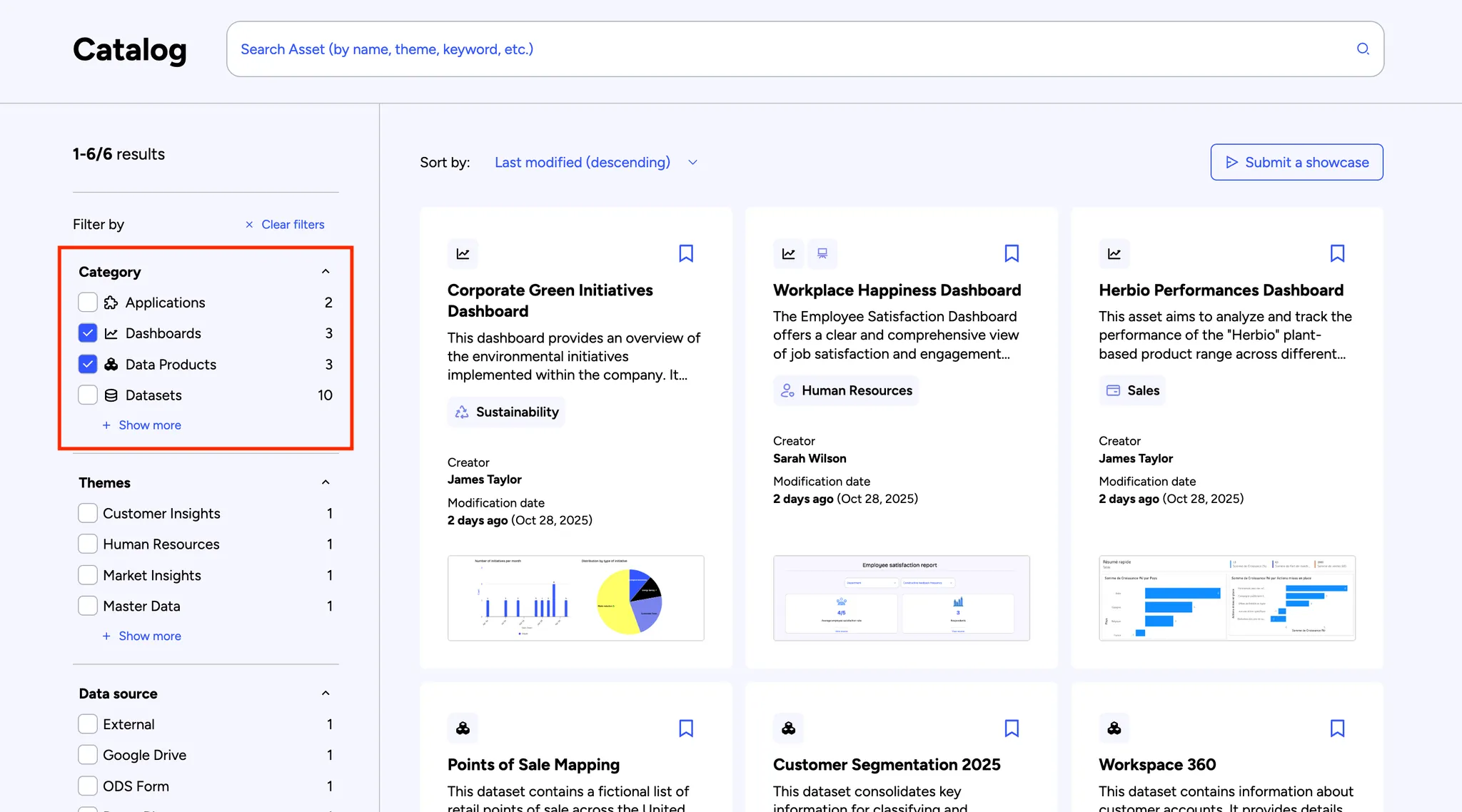What is a data asset?
A data asset is the core element of your data marketplace, it’s the common currency of data sharing.
A data asset is any processed data that adds value to users. They key words are “processed” and “value”:
Processed data means it is refined, structured, or enriched.
Valuable data means it helps users make decisions and gain insights, and is easy to interact with, download, or connect to a tool via API.
The most common data assets are datasets, visualizations, and dashboards. Your marketplace may also include applications, documents, maps, depending on how the admin has configured the available asset categories.
Your data marketplace brings all these assets together in one place, making data easy to find and access. Use filters on the left to narrow your search by asset type. Each asset card shows key information to help you quickly assess its relevance. More details here.
Some assets are stored directly in Huwise, while others live in external applications but remain discoverable through the Huwise portal (for example, Power BI dashboards). For external assets, you’ll need access rights to the external source to open them.
For publishers: to create and manage assets, see this article. While visualizations often attract the most attention, datasets are the backbone of the portal. They provide the raw material for charts, KPIs, and dashboards. Mastering dataset publication and management is key to being an effective data publisher. Learn more in this section.
Data product
Your data marketplace contains many assets, but only a few qualify as high-impact data products. Data products are often created to meet strategic needs and are therefore designed to be used at scale, with a particular focus on usability, understandable documentation and regular updating of information. They are strongly promoted and often benefit from increased visibility in data marketplaces.
For example within an organization, a data product could take the form of a centralized, constantly updated customer information application. This app, accessible to all employees, provides complete information on every customer, and therefore plays a strategic role in facilitating customer interactions, optimizing business processes and ensuring consistency across the organization. It requires rigorous management, strong promotion to drive usage and careful monitoring to maximize its effectiveness and added value.
Data products are based on specific agreements, called data contracts, that define what the product owner agrees to provide, as well as how the data will be used. This ensures transparency and reliability for users.
Data products also play a role in data governance. They drive most of the usage, giving data teams a clear view of where to focus maintenance and improvement efforts. Rather than trying to manage everything equally, they can prioritize the most impactful assets—the “best-sellers” of their data marketplace.


